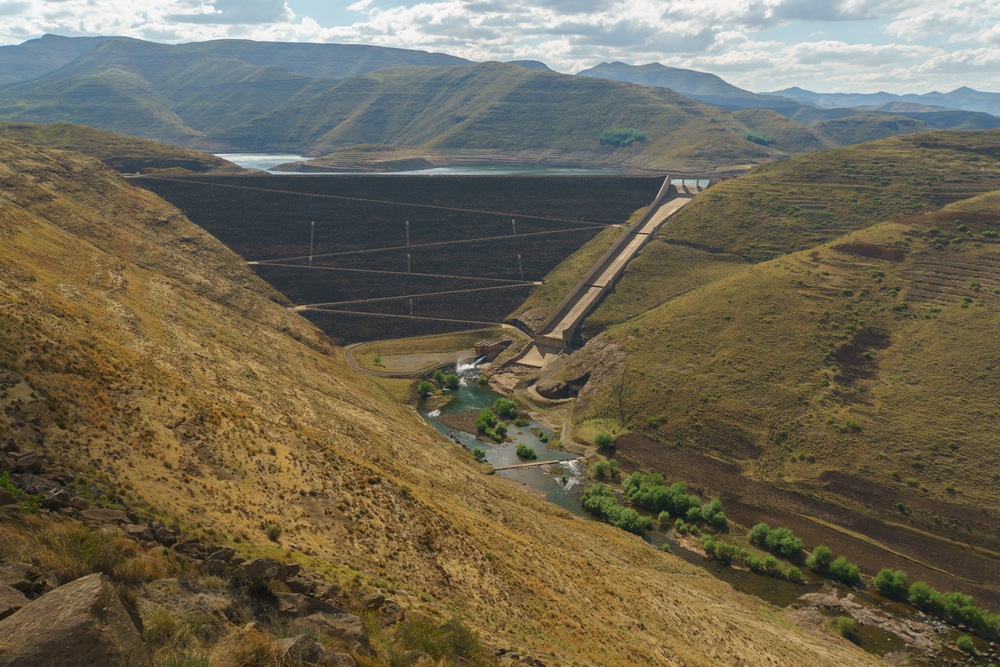Looking In on China’s ‘Going Out Policy’

Please note that we are not authorised to provide any investment advice. The content on this page is for information purposes only.
Chinese firms have invested in natural resources in low- and middle-income countries on a global scale. These include mining operations and large hydropower dams. Often these projects have environmental and social implications.
There are a range of reasons for these investments. Most have been made since the Chinese government issued its ‘Going Out Policy’ to encourage firms to invest overseas.
The main reasons include:
* rapid growth depleting scarce domestic natural resources;
Chinese firms have invested in natural resources in low- and middle-income countries on a global scale. These include mining operations and large hydropower dams. Often these projects have environmental and social implications.
There are a range of reasons for these investments. Most have been made since the Chinese government issued its ‘Going Out Policy’ to encourage firms to invest overseas.
The main reasons include:
* rapid growth depleting scarce domestic natural resources;
* the increasingly saturated Chinese market is enticing some firms, especially state-owned enterprises, to internationalise and acquire new markets;
* China’s rapid technological advances, as in energy technology, have made it possible to expand overseas; and
* China has long-standing political and economic ties with many low- and middle-income countries, particularly in Asia.
China is increasing its investment in Africa, Asia and Latin America through the bundling of aid, trade and investment. It is also exploring other channels such as diplomacy, migration and innovation. China is Africa’s largest trading partner.
Energy and minerals is one area of key importance for the Chinese. There is also a growing rise of Chinese foreign direct investment in Africa. However, these investments are only a fraction of what other countries invest particularly European countries.
Why China is attractive
China offers an alternative to traditional donors and investors in low- and middle-income countries. It does this with its bundling of aid, trade and investment. Also adding to China’s appeal is its priority on infrastructure projects and a no-strings-attached approach.
China’s no-strings approach also means that firms tend to be willing to invest in projects with questionable social and environmental impacts.
China has also been willing to invest in countries with a poor rule of law. These include Angola, Burundi, the Central African Republic, the Democratic Republic of the Congo, Eritrea, Guinea and Zimbabwe. Many Western investors are shying away from these countries.
Social and environmental impact
Examining Chinese-funded and Chinese-built overseas hydropower dams provides some answers about the impact of these developments.
Chinese dam-builders are world class engineers using very advanced technology. There are a wide range of Chinese firms involved in more than 300 dam projects around the world. Most are in Southeast Asia and Africa.
The large majority of these dams have been built since 2000. This was at a time when many other dam-building nations and organisations, particularly those from the OECD, withdrew from the dam-building industry due to its severe environmental and social impacts.
Sinohydro International, a state-owned enterprise, is leading the global hydropower sector in terms of number and size of dams built, investment sums, and global coverage. Other large players include Three Georges, PowerChina Resources, Gezhouba, Datang, Huadian and Huaneng, in addition to many smaller, regional and less-well-known dam-builders. State funding, like the China ExIm Bank, ICBC or the China Development Bank, often backs these hydropower firms.
According to a report by International Rivers, Sinohydro fared best in terms of implementing social and environmental guidelines compared with other Chinese dam builders.
However, its policies and guidelines are not yet at the same level as international standards set by other important organisations. These include the World Bank, International Finance Corporation and the International Hydropower Association’s Hydropower Sustainability Assessment Protocol.
In our recent research, we analysed Sinohydro’s social and environmental policies. We found that in 2011 there were plans to adopt eight of 12 policy commitments from the World Bank-related performance standards.
For example, according to the World Bank’s policy, dam projects should not occur in a national park, the habitat of threatened species, or in protected wetlands. However, after Sinohydro’s restructuring to streamline its global operations, these World Bank environmental and social guidelines were replaced by weaker internal company policies.
Policy documents released in 2013 and 2014 after the restructuring were closer to a no-strings-attached approach.
In addition, several dams built by Sinohydro in the last ten years are in national parks. Examples include the Kamchay Dam in Bokor National Park in Cambodia and the Bui Dam in Bui National Park in Ghana.
Yet Sinohydro reports to be at the top of its game in terms of environmental and social policies for a Chinese dam builder. It fares better than other Chinese dam builders, including PowerChina Resources. Many Chinese hydropower firms, particularly smaller and lesser-known ones, do not have any comprehensive social and environmental policies in place.
Another interesting aspect of our research was that we found striking differences between the dam governance process in Ghana and Cambodia. The Ghanaian government was more accountable to local affected populations and it was very involved in the project. Cambodia, on the other hand, was less accountable and less participatory.
The findings suggest that Chinese dam builders and financiers tend to follow social and environmental standards and best practice for planning and implementing hydropower dams. However, the national government plays a large role too in making sure this happens.
The pressure should therefore not only be on Chinese firms and financiers to minimise the social and environmental impact of large dams, mining operations, and large infrastructure projects. Host governments should be held accountable too. This will prove to be a challenge for many African nations.
Chinese investment: why the buck stops with African governments is republished with permission from The Conversation





